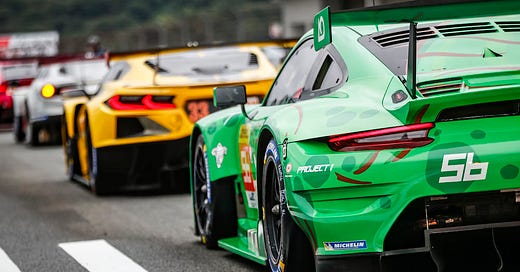Opinion: The Risk of Heavy-Handed Manufacturers in LMGT3
Daniel Lloyd considers the potential impacts of GT3 manufacturers getting free rein to choose their teams for the WEC’s new class…
It’s strange to imagine that Hypercar will become the oldest class in the FIA World Endurance Championship next year, courtesy of LMP2 being removed and GTE-Am being replaced. As the long-anticipated expansion of entries in the top category bears fruit, the WEC has adjusted the rest of its grid to accommodate.
The substitution of GTE-Am with GT3, which the WEC calls LMGT3, is mouth-watering considering it could double the number of brands involved. However, it doesn’t come without its potential pitfalls, including the risk of manufacturers getting too heavy-handed with their involvement.
Several people in the paddock have mentioned this danger and it should be a priority for the organizers to consider.
The continued expansion of Hypercar and substantial interest in LMGT3 resulted in the FIA and ACO limiting each manufacturer to a pair of entries. This was a good decision because it ensures that as many different GT3 models as possible can race, and it prevents one or two manufacturers from blocking out the class.
A field of only Ferraris and Porsches wouldn’t do justice to what has been such successful GT racing platform.
An interesting aspect of the WEC’s approach was that it gave the manufacturers the power and responsibility to select the teams that race their cars in LMGT3. In most cases, this has resulted in the manufacturer giving those entries to the team that is closest to it: AF Corse with Ferrari, Iron Lynx with Lamborghini and Manthey with Porsche are prime examples.




